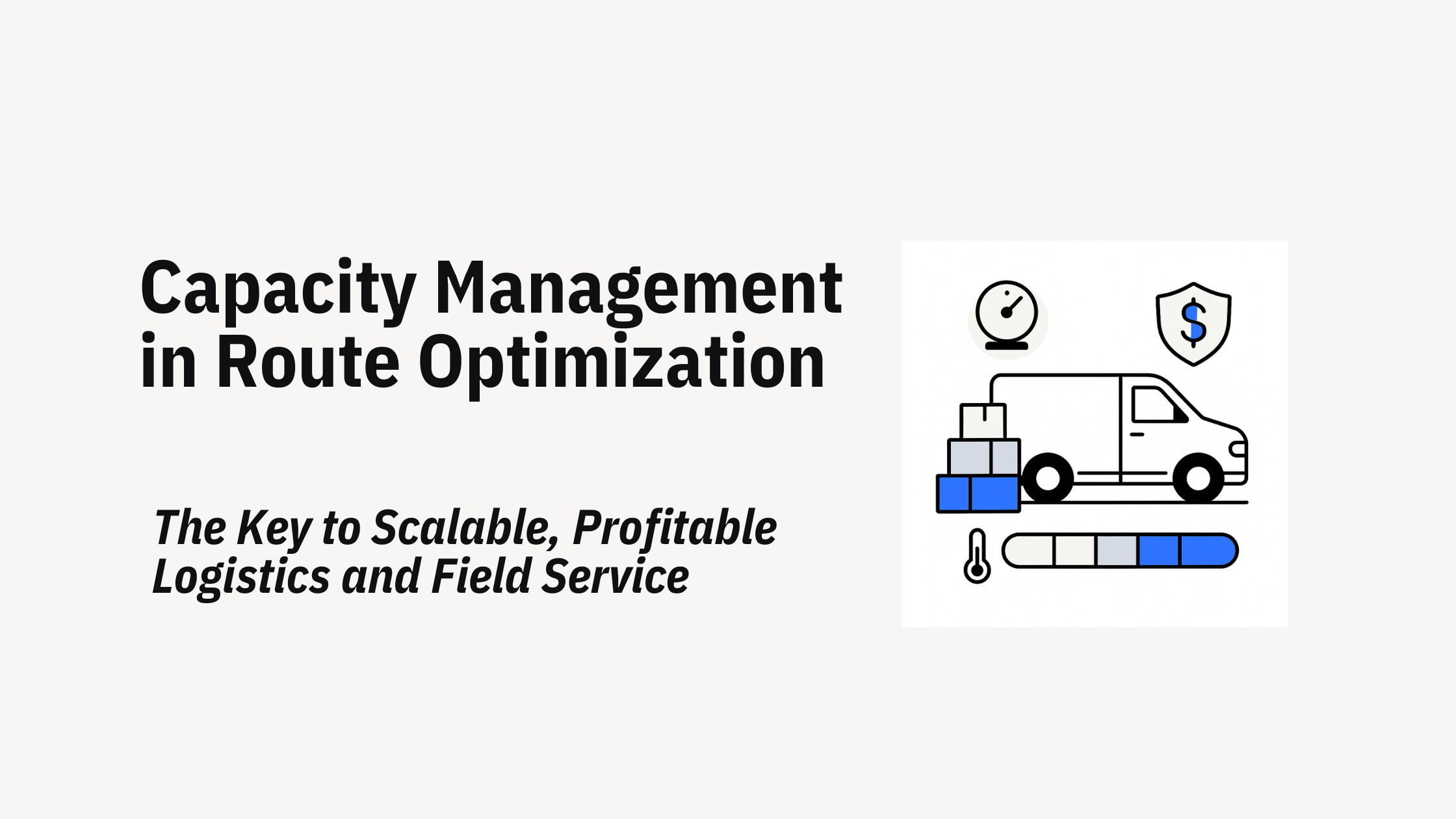Comparing the two leading Route Optimization APIs: with its extensive user base, Google Routes API is a pioneering tool in route planning and optimization. Its wide range of associated products allows easy customization to cater to diverse needs, from last-mile delivery businesses to field sales and service. If your requirements involve complex, large-scale route optimization with specific constraints and industry-focused needs, Solvice’s API may be the more appropriate choice.
.png)
Google offers route optimization capabilities through its Google Maps Platform, which provides APIs for routing and directions. These APIs enable developers to calculate optimal routes for various transportation modes, considering factors like distance, travel time, and traffic conditions. They are widely used in applications requiring navigation and logistics planning.
Solvice specializes in resource optimization APIs, including route optimization and scheduling. Our services are tailored to complex logistics challenges, offering advanced algorithms to handle intricate routing problems, such as vehicle routing with time windows, capacity constraints, and multiple depots. Solvice’s solutions are designed to integrate seamlessly with existing systems, providing customized optimization for specific business needs.
In summary, while both Google and Solvice offer route optimization services, Google’s APIs are more general-purpose and widely adopted for standard routing needs. In contrast, Solvice focuses on specialized, complex optimization scenarios, providing tailored solutions for intricate logistics challenges.

Google Routes API’s primary strength is its flexibility. Customers can mix and match APIs to create a software solution that suits their needs. For example, you can combine APIs for:
Although its website has a techie Google look, some users report that Google Routes API’s interface is relatively simple and friendly—especially if you’ve never used route planning APIs.
There are also several options for feeding the API with data: Google Routes API offers the usual form-based user interface for experimentation and the possibility to send data through an HTTP POST request or gRPC.
Computing a route matrix is another possibility. Given a list of origins and destinations, the method calculates the distance and duration of a route starting at each origin and ending at each destination.
What users say about Google Routes API:
“I like how concise it is and how it gives me different routes to the same location.. — G2 verified user in accounting, SMB.”
Google Routes API users report mapping issues, inaccurate geolocation, and connection issues, which is surprising considering that Google Maps is generally considered to be of the highest quality in the market.
Google Routes API is expensive, and pricing is complex. Google Maps APIs are priced on a ”pay-per-use” basis based on the number of “requests” made using the different APIs and SDKs. Although there is a free tier, the cost rises quickly once you use the API at full power (check out detailed pricing here). To help you find the right price, it is recommended that you engage a specialized location intelligence and certified Google Maps reseller like Localyse.
Finally, Google Routes API’s actual route optimization is limited. The maximum allowed number of intermediate waypoints per routes request is 25, which limits the use of the Google Maps platform for this use case to a limited number of small customers.
There are other problems with Google Routes API’s route optimization:
The Routes API uses a pay-as-you-go pricing model. The Google Maps Platform APIs and SDKs are billed by SKU. Usage is tracked for each SKU, and any API or SDK may have more than one product SKU.
Cost is calculated by SKU usage × Price per use
Compute Routes and Compute Route Matrix each have three SKUs that determine the cost of a request. The SKU used to determine the cost is based on the service you request, Compute Routes or Compute Route Matrix, and the features that you use in the request.
For example:

Solvice is designed specifically for all businesses with a deskless workforce delivering goods or services or for software vendors building solutions for this market. Field Service is notoriously the most complex part of the supply chain, and more efficient routing can have a massive impact on profitability.
Based on our testing, we’re confident that Solvice offers much more sophisticated route optimization than Google Routes API.
In particular:
💡 Want to see for yourself? Check out our 30-day free trial, or contact our onboarding team for an introduction to our more advanced features.
Implementing Solvice into our systems was seamless. Their APIs meshed well with our existing framework, significantly boosting our efficiency and scheduling capabilities. The results were almost immediate – we observed a marked improvement in our route planning and resource scheduling, with decisions being made more quickly and accurately than ever before. Mark G., Product Manager
The implementation of the Route Optimization API, led by our in-house IT team, was seamless, taking about a month to integrate the API to then build a user-friendly interface. Ole-André R., CTO
Solvice pricing is very straightforward. It is based on the number of resources (vehicles or people) that are scheduled over one month.
When comparing the route optimization capabilities of Google Maps Platform and Solvice, it’s essential to examine their specific features to determine which solution aligns best with your needs.
Key Differences:
In summary, if your requirements involve complex, large-scale route optimization with specific constraints and industry-focused needs, Solvice’s API may be the more appropriate choice. For general routing needs with real-time traffic integration and eco-friendly routing options, Google’s Route Optimization API offers a comprehensive solution.
NOTE:
Solvice recently opened up their routing engine for high speed route and distance matrix calculation, offering a valid alternative to other distance matrix calculation services.


